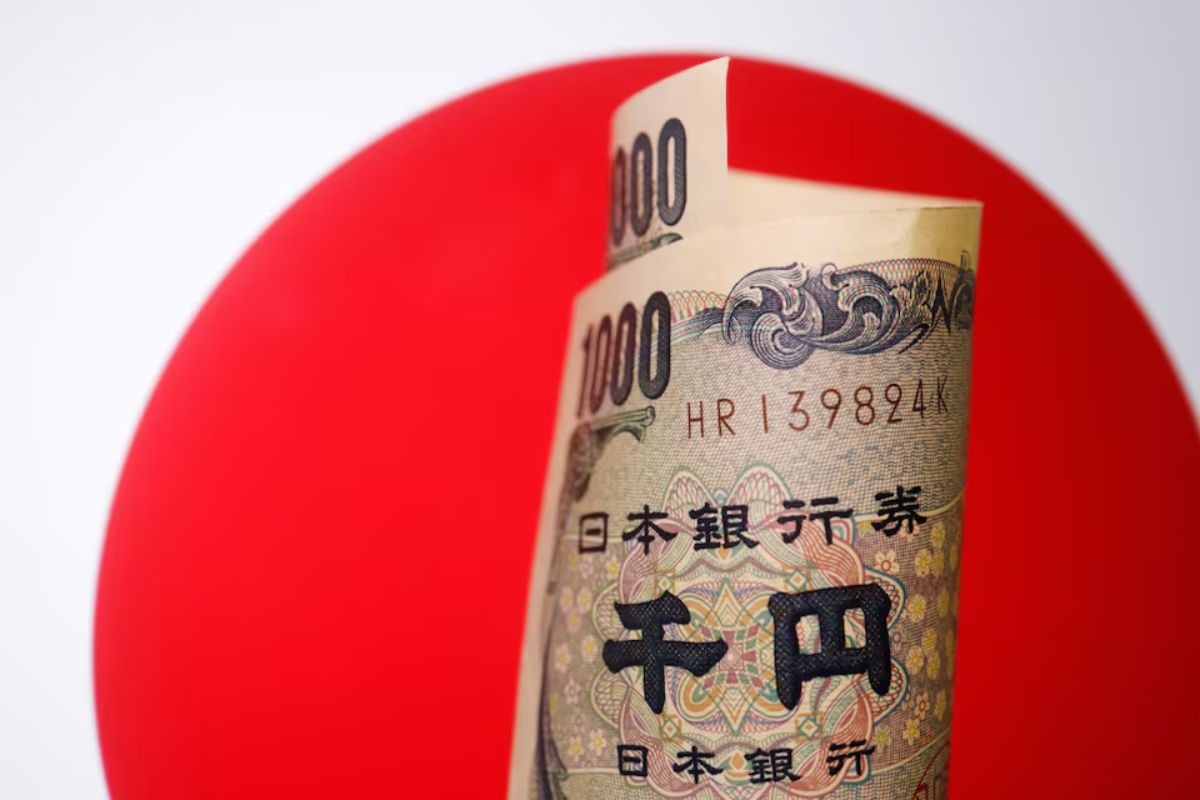Japanese Bank’s Bold Move: In a bold and strategic maneuver, the Bank of Kyoto is revolutionizing its approach by readying its workforce for the imminent shift towards positive interest rates through innovative e-learning sessions and the transfer of invaluable expertise from seasoned executives. This proactive stance establishes Bank of Kyoto as a trailblazer in financial acumen and foresight, signaling a pivotal moment in the industry’s trajectory towards excellence and mastery as the financial world gears up for significant changes.
Preparation for Positive Interest Rate Environment
In anticipation of Japan’s shift from negative to positive interest rates, Bank of Kyoto (5844.T) is diligently preparing its staff for the upcoming financial paradigm change. This strategic move showcases the bank’s foresight and commitment to staying ahead in a volatile economic landscape.
By offering e-learning sessions tailored to the needs of younger employees unfamiliar with positive interest rate environments, Bank of Kyoto is setting a new standard for preparing its workforce. These sessions are not just significant training exercises; they are sophisticated educational tools designed to arm staff with the knowledge and skills necessary to navigate the complexities of a positive rate environment.
Covering essential topics such as the intricacies of interest rate dynamics, lending rate determinants, and the nuanced impacts of rising interest rates on both the bank’s operations and its clientele, Bank of Kyoto is ensuring that its team is not just ready but empowered to excel in this imminent financial era. This proactive approach signifies a bold step towards mastery in an ever-evolving financial world.
ALSO READ: Japan’s Machinery Orders Plummet: Economic Turmoil Looms
Sharing Knowledge and Experience
Bank of Kyoto’s strategic initiative of intergenerational knowledge transfer propels its workforce towards unparalleled proficiency in steering the impending positive interest rate landscape. This bold move sets the stage for a revolution in banking excellence, where wisdom meets innovation to navigate the turbulent waters of economic change.
The transfer of insights from seasoned executives to the younger generation is a powerful tool in shaping a dynamic and resilient workforce ready to tackle the challenges ahead. The sharing of knowledge and experience within the bank is not merely a formality but a strategic investment in the future success of the institution.
- Wisdom Transfer: Older executives impart invaluable insights gained from steering previous positive interest rate environments.
- Communication Enhancement: Practical guidance on improving customer communication skills to adapt to changing market dynamics.
- Strategic Borrower Convincing Techniques: Sharing of proven strategies to persuade borrowers to accept higher charges effectively.
- Mindset Transformation: E-training sessions instill a proactive mindset in younger staff, preparing them for the shifting financial landscape.
Readiness for Economic Shifts
With the impending economic shifts on the horizon, the financial landscape is poised for a dramatic transformation, demanding unwavering adaptability and foresight from industry players.
The Bank of Kyoto‘s proactive stance in preparing for the potential positive interest rates signals a commendable commitment to readiness.
As inflation consistently overshoots the Bank of Japan’s target, the imminent interest rate hike poses both challenges and opportunities.
It is essential for financial institutions to equip their workforce with the necessary knowledge and skills to navigate the complexities that come with a shifting economic environment. Bank of Kyoto’s initiative to educate and empower its employees showcases a forward-thinking approach that sets a standard for the industry.
In a time where complacency can lead to downfall, being prepared for economic fluctuations is not just advisable but crucial.
The readiness demonstrated by Bank of Kyoto serves as a beacon of inspiration for other players in the sector, urging them to embrace change with vigilance and preparedness.
News in Brief
Bank of Kyoto pioneers readiness for Japan’s anticipated shift to positive interest rates. Through innovative e-learning and wisdom transfer from seasoned executives, the bank prepares its workforce for the forthcoming financial landscape. The initiative sets a new standard in banking excellence, ensuring staff proficiency in navigating positive rate environments. As the industry braces for significant changes, Bank of Kyoto’s proactive approach signals a strategic move towards mastery and adaptability in the evolving financial world.
Our Reader’s Queries
Q. What is the loan interest rate for Japanese bank?
A. In January 2024, the Japan Bank Lending Rate held steady at 1.475% per annum, mirroring the unchanged figure reported in December 2023. This rate, updated on a monthly basis, has averaged 1.625% per annum from January 1971 to January 2024, spanning a total of 637 observations.
Q. What is the real interest rate in Bank of Japan?
A. At the close of 2022, the BOJ Policy Rate remained at -0.10%, consistent with its value at the end of 2021 and reflecting a decline from the 0.10% reading a decade prior. For context, the average policy rate among Major Economies stood at 3.50% by the conclusion of 2022.
Q. What does Japan negative interest rate mean?
A. The Bank of Japan has made a significant move by ending its negative interest rate regime, marking the world’s final departure from this unconventional policy. Initially implemented to stimulate bank lending, boost demand, and foster inflation, the BOJ now deems this measure’s mission accomplished. Thanks to robust wage increases, the central bank sees its inflation target on the horizon, signaling a shift in monetary policy.
Q. Why is Japan raising interest rates?
A. The Bank of Japan is cautiously optimistic that Asia’s second-largest economy is finally breaking free from the grip of deflationary pressures. This trend has set Japan apart from other central banks, which have opted to raise rates in response to inflationary challenges stemming from the Covid-19 pandemic, Russia’s invasion of Ukraine, and disruptions in the global supply chain.



